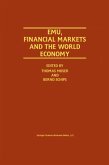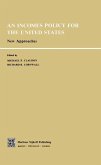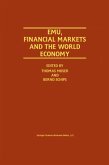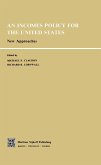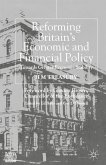Applied Macroeconomics for Public Policy applies system and control theory approaches to macroeconomic problems. The book shows how to build simple and efficient macroeconomic models for policy analysis. By using these models, instead of complex multi-criteria models with uncertain parameters, readers will gain new certainty in macroeconomic decision-making. As high debt to GDP ratios cause problems in societies, this book provides insights on improving economies during and after economic downturns.
"Applied Macroeconomics for Public Policy provides a delightful guide to understanding the dynamics of public debt and the mechanisms of its control. Combined with an engineering view and software examples it is a very useful handbook for anyone entering or working in this area." --Dimitri Blüschke, Alpen-Adria-Universitat Klagenfurt
"Applied Macroeconomics for Public Policy successfully fills an underexplored niche in government policy analysis. By utilizing both continuous and discrete time optimal control models, the authors integrate theory and data within a refreshingly pragmatic approach that is highly effective in evaluating current fiscal policy approaches to debt management. The book stays focused on using the empirical macroeconomic techniques that are directly useful for judging historical and proposed fiscal policy, and the methodology is captivatingly interesting." --David Hudgins, Texas A&M University
"Applied Macroeconomics for Public Policy successfully fills an underexplored niche in government policy analysis. By utilizing both continuous and discrete time optimal control models, the authors integrate theory and data within a refreshingly pragmatic approach that is highly effective in evaluating current fiscal policy approaches to debt management. The book stays focused on using the empirical macroeconomic techniques that are directly useful for judging historical and proposed fiscal policy, and the methodology is captivatingly interesting." --David Hudgins, Texas A&M University
"Applied Macroeconomics for Public Policy provides a delightful guide to understanding the dynamics of public debt and the mechanisms of its control. Combined with an engineering view and software examples it is a very useful handbook for anyone entering or working in this area." --Dimitri Blüschke, Alpen-Adria-Universitat Klagenfurt
"Applied Macroeconomics for Public Policy successfully fills an underexplored niche in government policy analysis. By utilizing both continuous and discrete time optimal control models, the authors integrate theory and data within a refreshingly pragmatic approach that is highly effective in evaluating current fiscal policy approaches to debt management. The book stays focused on using the empirical macroeconomic techniques that are directly useful for judging historical and proposed fiscal policy, and the methodology is captivatingly interesting." --David Hudgins, Texas A&M University
"Applied Macroeconomics for Public Policy successfully fills an underexplored niche in government policy analysis. By utilizing both continuous and discrete time optimal control models, the authors integrate theory and data within a refreshingly pragmatic approach that is highly effective in evaluating current fiscal policy approaches to debt management. The book stays focused on using the empirical macroeconomic techniques that are directly useful for judging historical and proposed fiscal policy, and the methodology is captivatingly interesting." --David Hudgins, Texas A&M University


